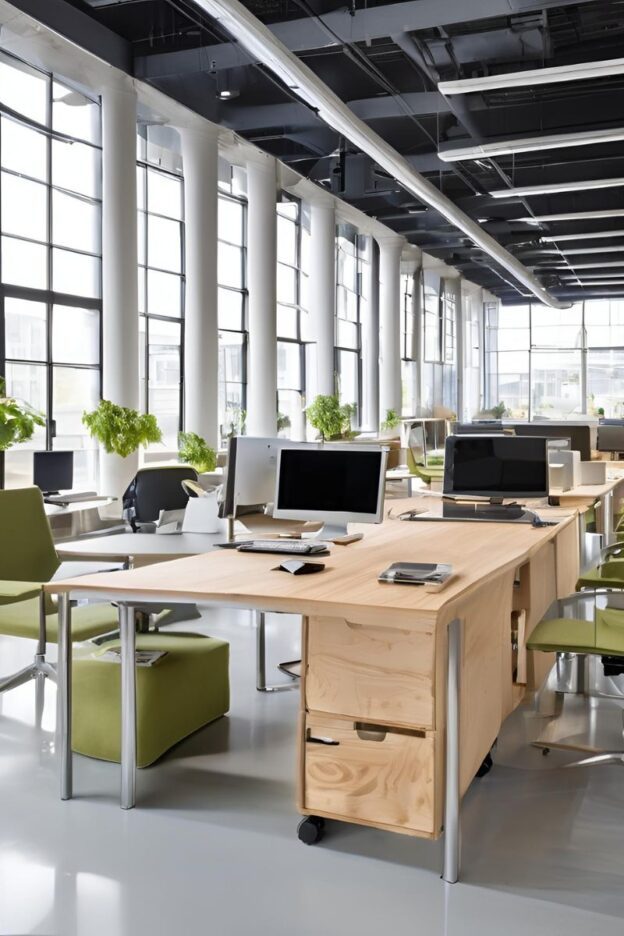Some interesting facts about the Office Furniture Industry
- According to the World Furniture Outlook by CSIL, the global furniture market was worth around US$420 billion in 2010 alone. China (37%) dominates the market.
- According to Statista
- The global furniture market revenue is expected to increase from 2024 to 2029 by $156.6 billion, or 20.47%, reaching a peak of $921.6 billion in 2029.
- The annual growth rate (CAGR) from 2024 to 2029 is expected to be 9.01%
- The global office furniture market was valued at approximately 54.24 billion U.S. dollars in 2021. The worldwide office furniture market was forecast to be worth around 85 billion U.S. dollars in 2026
Furniture management presents a series of challenges for Facility Managers responsible for overseeing large and small commercial office operations. As these offices expand or undergo layout modifications, the refurbishment and appropriate disposal of old, deteriorating furniture emerge as critical facets of the sustainability program. It is not uncommon for the Facility team to store old furniture in discreet locations such as corner rooms or basements to uphold an aesthetically pleasing environment for both visitors and occupants.
This write-up concerns challenges and framing criteria aligned to foster the sustainability initiative throughout the furniture’s lifespan: New Procurement, Use phase, Refurbishments, and End-of-Life.
Challenges
Challenges commonly encountered by the Facility Management team in the adoption of sustainable practices for office furniture management include the following:
- Knowledge Gap in Facility stakeholders – 75% of Office Furniture is sourced from unorganised small players in the local market.
- The facility Owner and stakeholders’ top management lacks the willingness and initiative to adopt sustainability practices.
- Inadequate or absence of government policy framework focusing on specific green requirements of Office Furniture.
- Inadequate knowledge and local ecosystem supporting regulations and certification programs promoting sustainability of the Furniture industry.
- The absence of locally certified refurbishment and end-of-life service providers compounds the cost imperatives for procuring green-certified furniture products.
Advancing Forward
- Setting comprehensive sustainable criteria for Furniture management

2. Awareness of standards for compliance by manufacturers and suppliers of Office Furniture
 3. Business Impact Assessment of Green Furniture
3. Business Impact Assessment of Green Furniture
- It is imperative to recognise that a substantial segment of carbon emissions associated with furniture emanates from the manufacturing phase. As reported in the ‘Benchmarking carbon footprints of furniture products’ by FIRA International, the average CO2 equivalent emissions are 72 kgCO2e for a task chair and 45 kgCO2e for a 1600mm x 1200mm workstation.
- Refurbishing and reusing old furniture extends its useful lifespan, saving 35% on new furniture costs.
- Awareness of Environmental impact fosters
- Increase awareness among buyers of the potential for furniture refurbishment services.
- Provide incentives for using recycled wood fibres by including an award criterion.
- Promote the circular economy by negotiating a take-back deal with manufacturers and suppliers for recycling, refurbishing, repurposing, and reusing old furniture.
- Signal the market to encourage producers to elevate the use of recycled plastic.
- Stimulate innovation in furniture companies regarding the design for disassembly and partial replacement of components.
- Cultivate skills development in furniture repair and renovation and responsible End-of-Life (EoL) disposal, facilitated by either the tendering companies or third parties.
- Decrease the volume of furniture waste sent to landfills by facilitating easier product separation.
4. Green Seals
Green labelling gives purchasers and consumers a robust view of the product’s sustainable attributes.

Environmental sustainability is of utmost importance globally and affects all conscientious individuals. Understanding the ecological repercussions of everyday items and implementing substantial and long-lasting sustainable practices has become increasingly crucial in modern times.

